Fly Me to the Moon
NASA have stated that they are heading back to the Moon in 2024. This week we’re finding out why, and what’s in store for us as we head up there. Plus, in the news, cave paintings dated to 40,000 years ago, the strange magnetic fields found around the Sun, and the 3-D printed rabbit with its own DNA...
In this episode

00:57 - Gene therapy for epidermolysis bullosa
Gene therapy for epidermolysis bullosa
Joanna Jackow, Columbia University
Imagine if your skin was so fragile that even the slightest knock caused it to blister and tear. This is the reality for people with a condition called epidermolysis bullosa. It occurs when a person inherits faulty copies of the genes that make the crucial skin protein “collagen”. But help may now be at hand, because Columbia University researcher Joanna Jackow has found a way to make stem cells, called iPS cells, from patient’s skin cells; edit the faulty genes in the stem cells, and use the now-repaired cells to grow new, healthy skin. It's the first step towards skin replacements for patients with these sorts of genetic skin diseases...
Joanna - Patients have an extensive blistering of the skin because they were born with this mutation. The skin starts to blister right after birth. These blisters are chronic wounds that are not healed, and these chronic ones convert to extensive scarring and, finally, with increasing age, the patients get a skin cancer called squamous cell carcinoma.
Chris - What's the approach you've taken to try to put this right?
Joanna - Using this magic genetic scissors called CRISPR, we can fix this mutation in cells called induced pluripotent stem cells, which are cells that we can generate from the patient's own cells. Because the cells have a potential of differentiation to any cell type we want, in our case skin cells, we can develop skin equivalents, which we called grafts, and these skin equivalents can be grafted onto the wounded areas of the skin.
Chris - So you're saying 'make some stem cells, fix the gene problem in those stem cells, and then grow new rafts of skin from the fixed stem cells so that you've got new skin to put on to the individuals with the condition?
Joanna - That's correct.
Chris - How do you go, though, from those "fixed" skin cells into actually making skin?
Joanna - Yes, we take the right cells now and put them together in a matrix called collagen, and the cells will grow into a normal skin that we called a skin-equivalent; and the skin equivalent can be grafted on the patients.
Chris - Have you tested this though, in the sense that: you've got these patches of skin-equivalents, do they survive in the long term and for instance, if you put them onto an animal in place of its own skin, do they work?
Joanna - Yes. We used for this immune deficient mouse model, which is a model which doesn't have immune system and will not reject this graft. And we've been testing the survival of this graft two months post grafting and we could demonstrate that the grafts survived and produced this protein that was missing in previously in the patient's skin.
Chris - In other words, the implication is, were you to do this in a patient, because it would be their own cells, there wouldn't be an immune problem. So you could just put these skin patches on in place of the individual's injured skin, and it should take over the function of their injured skin and give them a healthy working skin?
Joanna - Exactly. That's exactly what is the concept of our strategy.
Chris - Big problem though, when you consider how big a person is, I mean the surface area of a human that's, you know, metres squared of skin, isn't it? So is it feasible to actually do this on the scale of the entire body? Because you'd have to replace all their skin, wouldn't you?
Joanna - Yes, this is an excellent question and we've been already thinking of this. So, we would like to first cover the large wounds of the patient's body and we hope that, because we are deriving the skin equivalents from keratinocytes, that - hopefully - have also a population of stem cells. Eventually, these grafts can take over and cover the whole body of the patient.
Chris - Thing is, skin isn't just skin-producing cells, is it? There's hair follicles in there; there are more complicated structures, like sweat glands, as well. Those aren't going to be present in the grafts you make, are they?
Joanna - That's what we are thinking as a next step, to make more complex skin including all these very important components. As you mentioned, hair follicle and sweat glands. This is what we keep in mind in the future...
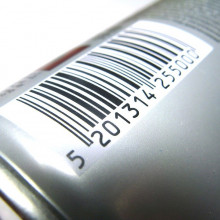
05:38 - Barcode inventor dies
Barcode inventor dies
Peter Cowley, Angel Investor
Barcodes are everywhere, to the point where you probably don't notice them...until you're stuck with a nasty bill, or you have to find them on an item you want to scan yourself. But, this week, a pioneer of barcode technology, George Laurer died at age 94. Reflecting on how lines of black and white equate to a loaf of bread and George Laurer’s world-changing invention, angel investigator and tech commentator Peter Cowley joined Adam Murphy and Chris Smith...
Peter - We all know what a barcode looks like, because we see that on retail products and they're basically a set of vertical lines. They're black lines of varying widths and they're actually, if you look closely at it, you'll see the white lines and also of varying widths. There's four different widths of black and white and that together they make up a code. That code is on a retail product, the variety of barcodes from a linear one dimensional barcode here, the variety they make, there's 100 billion combinations here, so that's obviously a great deal. Some of that'll be the manufacturer or the distributor, but it'll be the product code as well. So a device actually looks at this and converts it to a number which is also printed on anyway in case a barcode is not readable. So a checkout operator potentially could type that in. So, basically encoding a set of numeric digits or possibly alphanumeric characters into a set of vertical lines.
Adam - How did we end up with these set of lines? How do they get invented and how did they end up in shops?
Peter - Yes, George Laurer, and in fact a guy called Joe Woodland who died a few years ago, in the early fifties produced something loosely based on Morse code. If you think about it, on off, on off, if you know Morse code. And, apparently, he was walking along a beach at one point and he drew lines in the sand and from that he decided that's a great way of doing it. The initial barcodes actually were circular, but they found that the printers in those days, in the early seventies, weren't good enough, so they just turned into the linear ones. What happened was the national association of food chains in the States decided they want to encode somehow and so they put out a tender and a number of people went in there and in fact in the end it was IBM that won this and these two people, George and Joe, worked for that. The first retail barcode was scanned in in 1974 - it was a packet of chewing gum, apparently!
Adam - Wow, now, you can't scan a barcode without a barcode scanner? How do those work?
Peter - Actually you can. I've been around barcodes for 35 years and there is something which I think sent to lead to a five which you can actually read. Super geeky, but generally, have you looked at the UPC in front of me here? Which UPC Universal product code, I can't read that. The original reading was done and I have, I go back long enough, I remember buying these things; there was a wand and the end of the wand was a light source and there was a receptor and you pulled it across with your hand across it, it would read light, dark, light, dark and the timing which would give you the width of the whites and the width of the blacks and that's then your code, you send it back to some sort of computer system that's worked it out.
Chris - Didn't you have to therefore make sure you drew it at a very standard rate, then, Peter? If it was the timing?
Peter - No, it worked it out - I mean obviously if you'd stop, start, stop, start, it wouldn't work - but, generally, the hand, it's only an inch or so, you know, across 32 millimetres. And so that was possible. That would damage of course damage the paper, because you were actually pressing on it. So the CCD - charged coupled device - arrived, which read the whole lot at once, either with ambient light or with its own LED. And the ones we see in the supermarkets now, have a laser diode, and it's got a rotating mirror or prism, which then scans it very rapidly.
Chris - And, sorry to interrupt, but, I'm fascinated by that. So in there, basically, that laser beam is scanning backwards and forwards. How is it reading? Is it that the laser bounces off of the white bits but not the black bits?
Peter - Exactly, exactly. And then there's the face receptor. Exactly. Yeah.
Adam - And now, you mentioned there were circular barcodes, but what other kinds of barcodes can you have?
Peter - Well, the linear ones, these are the one dimensional ones, there are about 30 odd and they store usually 20 or maximum 30 characters, sometimes less than that. But of course many of us have now seen the 2D barcodes. There are about 40 different types of two D barcodes. These are the ones that look like a dot matrix and matrix with lots of dots and these can store several thousand characters. They've got much greater resilience, and I've got a barcode here, which you won't see on the radio with a picture of my face, which is actually a link to my LinkedIn profile. My face takes up a lot of the middle of the thing and it still reads perfectly because there's a lot of resilience and redundancy in a 2D barcode.
Adam - I remember when I was walking around Dublin on Sunday at a literary festival, they had copies that would let you link to James Joyce's Ulysses that you could download. But I didn't because I was suspicious of how safe they were.
Peter - Absolutely, there are all kinds of ways of sending you to the wrong website, which could be malicious, could be a phishing website. There's a potential there of premium rate texts being sent from that. There's also, there's not really the possibility of executing illegal code. That's okay. But certainly, I would never recommend scanning something that, unless you know what it is. It's like putting something in your mouth when you don't know what it is, isn't it? You wouldn't do that. Can I just very briefly mention RFID? That's the next stage. So this is where there's a chip. These things are obviously more expensive because there's some technology there. They actually put them in Japanese bank notes. So there's a chip in each one in the metal Stripe. So they have to be very cheap. But generally that is probably the future of bar codes, when the price can be got right.
Chris - They work a bit different, don't they, in that the way they work is that there's a signal sent from a device which then effectively gives energy to the thing that's in the product, which then does a bit of processing and sends back a signal which is unique to that product.
Peter - Yeah, exactly. Yeah, but that's hidden and also, you can write to that device as well.
Chris - And obviously, the power of that is, unlike the barcode you've got in front of you, which someone's physically got to scan, these things basically they'll respond whenever their wake up call is transmitted anywhere near them.
Peter - There's a problem with people's privacy and the fact that you supposedly can read them into your pocket from a distance across the road.
Chris - And the problem I have, which is I always seem to set these things off when leaving shops, despite the fact I have not stolen anything.
Peter - Well, exactly, let's talk about that later, Chris.
Chris - No comment!

12:41 - 3D-printed rabbit with its own DNA blueprint
3D-printed rabbit with its own DNA blueprint
Robert Grass, ETH-Zurich
Scientists have created a DNA sequence containing the computer code for 3D-printing a plastic rabbit. But in an even more cunning twist, they've developed a way to enclose the DNA inside microscopic glass beads that can themselves be mixed into the plastic used to print the rabbit. In this way, just as biology endows each of our body's cells with the molecular recipe for a human, every part of their plastic rabbit contains the DNA code to make a replica. And by chipping off a bit of its ear, extracting the DNA and decoding the instructions, it was possible to 3D print 5 generations of rabbits. Amalia Thomas heard from the study's author Robert Grass how they did it...
Robert - So what we've done is that we've shown that we can store digital information in everyday objects, and we use DNA as a data storage medium to do that.
Amalia - What do you mean by DNA? Do you actually mean what's inside our bodies?
Robert - Exactly. So we use exactly the same molecule as biology uses to store our own blueprints, but we don't use natural DNA. But we have the DNA chemically synthesised in the sequence, we design it for.
Amalia - How much information can be stored in DNA.
Robert - So theoretically you can store tremendous amounts of information in DNA. Probably all the information we have in the world would fit into a few grams of DNA. What we do, we put the DNA into objects and you could put really, really large amounts of digital information into everyday items.
Amalia - So how did you do this? What technique did you apply to store information as DNA in an everyday object?
Robert - To do this, we have to first translate the information to DNA. For that, we have an encoder that was developed by my collaborator Yaniv Erlich. He's an expert in doing this translation of digital information to, let's say DNA sequences. We then have these DNA synthesised by a company that makes DNA , but you can't just mix it with polymers, because DNA doesn't mix with polymers. The DNA would not be phase stable. To get around those problems, the DNA, we encapsulate it, it's a small glass capsules, which are just a hundred nanometers in size. When we put the DNA in, this glass capsules, it's protected from decay and we can mix it easier with polymer solutions. So once we have the DNA in these particles, we mix the particles with the polymer solution, solidify the polymer, and then the polymer contains the particles, containing the DNA, containing the digital file.
Amalia - Could you give us an example?
Robert - The examples we really did, is 3-D printed objects, which contain their own building instruction or blueprint within this 3-D printed item. So one of the most common 3-D printed parts people make, is called the Stanford bunny. So we have this 3-D information of the bunny as a digital file, which we use to print a bunny. But at the same time we take this digital file, we translate it to DNA and infuse that DNA into the polymer from which we printed the bunny, so that the bunny then contains its building instructions as DNA in the final item, and so what you can do, you can take a piece of the bunny, read the 3-D file which was made from the DNA, and use that to make more clones of that original bunny. So far we've done five generations, but we could go to significantly more bunny generations and they would still be perfect clones of the original bunny we had made.
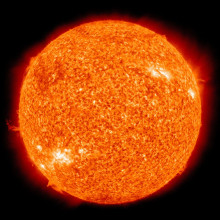
16:47 - Parker Solar Probe reveals magnetic twists
Parker Solar Probe reveals magnetic twists
Christopher Chen, Queen Mary University London
Adam Murphy has been speaking with Christopher Chen about new papers published in Nature, which shed some light what the Parker Solar Probe has been up to...
Adam - in August of 2018, NASA launched the Parker Solar Probe, and sent it hurtling off towards the Sun to further our understanding of the source of our sunlight. The probe is about the size of a car, with a heat shield covering one side so that it can withstand the enormously high temperatures. The other side has a suite of instruments on it, like magnetic field detectors to help us probe into the Sun. The probe is currently orbiting the Sun, getting closer and closer to its atmosphere, which is known as the corona. Now as it approaches, it's discovered something unusual in the Sun's magnetic field, which may help to explain some of the deepest mysteries about the Sun, like how the atmosphere surrounding it is hundreds of times hotter than the surface. I heard how from Christopher Chen at Queen Mary University London, who was involved with interpreting the data from one of the solar probe’s instruments.
Christopher - We found several new and unexpected discoveries. So one of these is the fact that we found these big folds in the magnetic field near the Sun. So the spacecraft has a magnetic field sensor, and what it found was that within the period of a few seconds, the magnetic field flips direction entirely. So at one moment it's pointing away from the Sun and then in a few seconds later, it flips to be pointing towards the Sun, and then it flips again and is pointing away from the Sun again. And this is sort of unexpected. It's not been seen further out and we don't know exactly what is causing these large flips in the magnetic field.
Adam - And that kind of thing doesn't happen here on Earth, does it?
Christopher - In the solar wind at earth, there are large amplitude fluctuations in the magnetic field, but these flips are certainly not as clear and pronounced as we're seeing up close to the Sun. It looks like a different type of structure that's occurring. Yeah.
Adam - And as it's getting closer, is it changing those flips, or how static are they?
Christopher - So they are getting more intermittent and more bursty. What is seen is that, as we're going closer to the Sun, there are these periods where the solar wind is very, very quiet and the magnetic field is not flipping at all. But then there are these periods where it's flipping all over the place, and really rapidly, and at all kinds of timescales as well. So some of these, so we call them switch backs, so some of these switchbacks last for just a couple of seconds. Some of them last for minutes. So it's really much more bursty and much more, sort of, complex and dynamic up close to the Sun.
Adam - Given how big the Sun is, given the scale of it, the idea that the magnetic field can flip over the course of seconds seems really, really intense to me.
Christopher - Yeah, so when I say the magnetic field's flipping, it's not the entire magnetic field of the Sun, but it's the magnetic field in the solar wind where the spacecraft is measuring. So if you think of the magnetic field around the Sun, it's not as simple shape that you'd get from a bar magnet, but it's actually a really complex, intricate structure. So there's loops of magnetic field on the Sun. There are these long striations of magnetic field lines that that stretch far out into solar wind. So it's really the flips within this structure of the magnetic field as it points away from the Sun.
Adam - And what other kinds of things is the Solar Probe measuring?
Christopher - So for example, there's an instrument which measures the solar wind velocity as it travels away from the Sun. And what that found was that as we're going in closer, the solar wind is not flowing just radially away from the Sun in straight line, the solar wind is spinning around in a circle as it's traveling away from the Sun. But this speed of the spin is much faster than we expected from our models. So we say that things that are spinning have angular momentum, and the solar wind is something which can transport angular momentum away from the Sun. So what that's really causing is the Sun to be spinning at a slower rate than it otherwise would be. So the solar wind is carrying away the spin from the Sun.
Adam - And what implications do these results have for our understanding of the Sun?
Christopher - So they're really sort of changing our view of what's happening. One of the big mysteries of the Sun, and solar physics is something known as the coronal heating problem. So the corona is at a temperature of more than a million degrees, whereas the surface of the Sun is at a few thousand degrees. So it's really the atmosphere of the Sun is hundreds of times hotter than its surface. And this has been a long standing mystery in solar physics. So one of the things we're finding is that the amplitude of the fluctuations are getting much larger as we're going in closer. So as I said, we have these big folds in the magnetic field, and they contain a lot of energy in them. So we're thinking that these are involved somehow in the process which is causing the corona to be heated to such high temperatures. And another thing is the existence of the solar wind itself, the solar wind, by the time it gets to the Earth is traveling at around a million miles per hour or so. And it's again another open question as to how the solar wind comes to be traveling so fast. We think again that these large amplitude fluctuations, and this sort of complex, chaotic dynamic environment is providing the energy to push the solar wind and cause it to be accelerated to these large speeds.
Adam - Lastly, what's next for the solar probe? What's it going to start measuring now?
Christopher - So over the next few years, it's going to be getting gradually closer and closer to the Sun. And one thing that we expect to happen, within perhaps the next year or two, is it to cross within the solar corona itself. So it has not got within the corona yet, but we're expecting it to do so within the next few years. And then it's really going to be in a completely new, unexplored area of space. Right up close to the Sun.
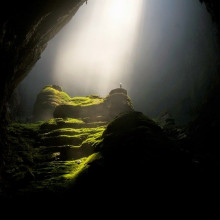
22:30 - Earliest image of human hunting dated
Earliest image of human hunting dated
Alice Samson, University of Leicester
Deep inside a cave, on the Island of Sulawesi in Indonesia, may lie the oldest ever cave art depiction of our ancestors hunting. Painted more than 40,000 years ago, it gives us a rare glimpse into how early humans may have thought and acted. Nadeem Gabbani asked cave art specialist Alice Samson, who wasn’t herself involved in the work to date the painting, which was published in Nature, for her reaction to the discovery...
Alice - This cave is quite hard to access. It's quite out of the way. The rock art is in a cave, the opening of which leads out from the back of another cave. It's like seven meters up in the cave wall. You have to scramble up there. And the rock art itself is like three metres above floor level. The art is actually really interesting and really quite beautiful. And what we see is quite a dynamic scene of multiple animals, that seemingly are sort of galloping across the wall; and then a whole bunch of smaller figures which the authors in the paper called therianthropes, which is basically a long word which means figures with combinations of human and animal features. So there's these kind of human/animal-y mini-figures chasing or scampering around after a lot of larger beasts. These are drawn in what looks like a kind of red ochre-y pigment or paint on the limestone walls of the cave.
Nadeem - Incredible. So they're also saying that this is the oldest hunting scene that has ever been found. What do you think they're hunting? What's the significance?
Alice - To be honest, we don't know what the original art actually means, okay. But the significance of it, in terms of understanding human evolution, and human cognition and thought processes, that's where its significance lies I think; because it's showing that as far back as like 40,000 years ago people were depicting abstract thoughts and ideas in artistic form, on for example cave walls or in small carvings. It's pretty exciting. This paper that these archaeologists have done has obtained some really early dates for for this rock art, which predates by several thousand years stuff that's found in the area, and also early palaeolithic rock art in Europe. Although the dates themselves... it's not actually a direct dating of the rock art. What they've done is used a technique called Uranium-Thorium dating, which dates flowstone, the way that stalagmites and stalactites form on top of the rock art. And so they've got a date for that material that's formed on top of the rock art, and that basically gives you a date before which the rock art must've been made. So the flowstone is dated to around 40,000 years ago, and the art underneath is then earlier than that.
Nadeem - How does this link to the migration of man from Africa, for example?
Alice - There were Homo sapiens in Southeast Asia much earlier than this rock art, but this rock art represents some of the earliest evidence for symbolic thought and abstract thinking by anatomically modern humans.
Nadeem - Briefly back to the rock art itself: these hunters, they have animal heads. Any comments about that?
Alice - This is a really common feature of early rock arts, okay. It often depicts humans and animals and human/animal-y things. We're obsessed, in our modern scientific approach to the world, in taxonomies and, you know, the difference between particular different species, and humans being separate, and different entities from animals and plants and things like that. But this is a particularly 'enlightenment' and modern, rational, scientific way of conceiving the world. And we cannot make the same assumptions about the past and about the ways in which people in the past saw their world. So yes it does look like a hunting scene. The authors have pointed to the presence of maybe ropes or spears, and the fact that these little figures, the little animal-human figures, are chasing maybe or corralling, or certainly interacting with these animals. So it certainly looks like it could be a hunting scene. But whether it's just a straightforward depiction of an everyday activity or whether it is something more complex than that, I think, is hard to say. I would say that it's actually speaking about much bigger topics about the relationships between humans and animals and their environments. This is not a casual activity. I imagine the actual painting of the rock art itself was a very significant and ritual practice rather than just a casual doodle.
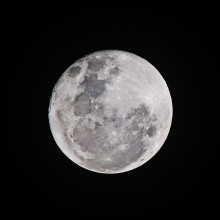
30:10 - What's special about the Moon?
What's special about the Moon?
Lewis Dartnell, University of Westminster
What exactly is the Moon, and what’s up there for us in the first place? Adam Murphy spoke to Lewis Dartnell from the University of Westminster about our nearest celestial neighbour...
Adam - The moon has fascinated us since time immemorial. Formed as leftover debris from a primordial collision, our biggest natural satellite holds a special place in all our hearts. But we haven't been back since Apollo 17 in 1972. However, new missions are sending humanity back to the moon. But what's there for us? I spoke with Lewis Dartnell from the University of Westminster about what is actually up there for humanity.
Lewis - Well what we've learnt from the Apollo missions in the late 1960s and early 70s, when we're able to go to specific locations on the moon surface and bring back rocks, bring back geological samples back to the earth that we can study, is the astonishing thing is that the rocks on the moon are very, very similar to the rocks on earth. At least their composition of different elements and isotopes is very, very similar to the earth. So that's why we think, that's one of the best pieces of evidence we have, that the earth and moon have both come from the same basic mixing pot, as it were. Although the exact kind of rocks and minerals we find on the moon are exceedingly bone dry, far drier than any of the rocks we find on earth, because earth is covered with this lovely thick atmosphere and deep oceans; the moon is exceedingly dry in comparison.
Adam - So if moon rocks are like earth rocks - and we've got plenty of earth rocks down here - what's up there we might want?
Lewis - The sort of things that we talk about, in terms of in situ resource utilisation - which is just kind of space talk, that's kind of nerd talk for living off the land - if we're trying to send humans to survive on the moon in lunar colonies or lunar habitats, we're going to have to find things on the moon that we need to help us survive there. So things like water ice near the poles will be very useful in the moon for not just drinking water for astronauts and a moon base, but also splitting that water, spitting that H2O to give off oxygen, which you can use for breathing. But we also think there are things which have an inherent value on the moon that we could export from the moon back to the earth. And these sort of resources would be metals which are either rare or hard to mine effectively on the earth, things like platinum or tungsten, or they might be other resources which we haven't started using on the earth. And one of these resources would be something like Helium-3. And we think that Helium-3, one of the isotopes of helium, would be the ideal fuel for nuclear fusion reactors.
Adam - But what is it that's bringing us up there again? And why now?
Lewis - Another very good reason to go back to the moon would be effectively as a stepping stone on our journey, on humanity's path out to the planets. And the next logical step would be to start sending humans to Mars and perhaps trying to establish some kind of human presence there. But Mars is just so much further away than the moon is. And if you are an astronaut in a human colony on Mars and you have some kind of emergency, maybe some of your technology on the base keeping you alive starts malfunctioning, maybe you have some kind of medical emergency, you would have to wait perhaps several months before the Earth and Mars start lining up in their orbits so you could launch to come back home. And what we would therefore want to do before we start attempting a long-term human habitation on Mars is to learn all of our lessons and make sure we can get things right on what is effectively our own front doorstep, on the moon. So the moon in that sense represents a much closer, safer place - a test bed, if you like - for all the technologies and tools we'd need for exploring Mars and then out through the rest of the solar system.
Adam - And does Lewis see a future in which humans are living on the moon long-term?
Lewis - I do. It's something that, within my own research of astrobiology and space exploration, it's something I think would be very, very exciting and something very important for humanity to do. To start spreading beyond our own planet, look beyond into new horizons, start establishing a permanent human presence on the moon, possibly Mars, possibly out through the asteroid belt, maybe mine these places for useful stuff to support human civilization back on our home world.
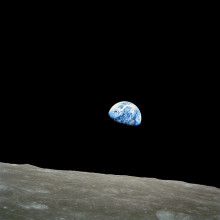
Drilling on the Moon
Mahesh Anand, Open University
There are plans for a joint mission between Europe and Russia to drill and analyse samples on the Moon in search of water, ice and other chemicals. Involved in this mission is Mahesh Anand from the Open University, and he joined Adam Murphy and Chris Smith in the studio to fill them in on the details...
Mahesh - The European space agency is collaborating with the Roscosmos and by 2024, we plan to land at the lunar South pole region, to test first of all, whether there is really water ice near there. If it is there, then how much of it is there? What is its distribution like, and how much of it can be actually extracted in the form of water?
Chris - Is your mission a "Rover" mission? Will you land something a bit like, we've got Curiosity trundling around on the surface of Mars, or is this a static thing? You will land something in one place and then do all your tests there?
Mahesh - No, this is just a lander mission. So this will simply land at a location and there it has a limited functionality in the sense that it will have about a metre or so or two metres or so within its reach.
Chris - It's an arm, is it?
Mahesh - It would have an arm that can extend and also it will have a drill that will have certain mobility to actually vary itself, then sub-sample the surface.
Chris - So it'll go into the surface, get some samples at varying depths, it knows how far it's gone, how does it then get the chemical composition of the surface? How does it know what it's tasting?
Mahesh - Right. So it's a combination of two different things. So drill is one piece, that Europe is providing and the other bit is a chemical laboratory called Prosper. Now this laboratory is being currently built at the Open University and the idea is that the drill actually is going to drill at different depths, almost up to a metre depth. And then from time to time it is going to actually bring the drill material to this laboratory, which is then going to cook it up. And then what will get released gets detected by the mass spectrometer, which would be in this instrument.
Chris - So chiefly water. Because the other thing we heard about from Lewis Dartnell just now was other things like rare Earths, like precious metals as well because of the asteroid and another impacters that have hit the moon in the past, and we think that that there may be some surface material there from that source. Can you analyse all of those things?
Mahesh - So in principle, yes, all of those things could be analysed, but I think we have to first decide on our priority list and as scientists who are actually working on this mission, we all decided that actually finding water is probably going to be the biggest thing first of all, followed by other things that could be measured. And remember this is going to be just at a location and if water could be found then I think there will be more reason to go back to the moon, to other areas and actually do further analysis.
Chris - And this is not something that the rocks that Apollo 12 and so on brought back with them? We can't get enough information from those samples? You want to go to that location. Is this not a bit like throwing a dart into a dartboard and just ending up in one place and you just have to hope you're lucky and you hit the triple 20, or the bullseye with where you land this thing? Or is it more informed, your landing site decision?
Mahesh - It is actually quite a detailed exercise. So it's not as simple as just blindly landing somewhere. There's a lot of work that is going on where actually colleagues are looking at remote sensing data set at a very high resolution and trying to figure out what could be the best landing spot that actually takes all those boxes. More importantly, can you land safely? Because safety is paramount. You have to land safely. And then secondly, can you actually land safely in an area where actually there is an enhanced signature for the presence of water ice within the first metre off the surface? Because remember you can only drill up to a metre depth or so. So these are all different combinations that are taking place at the moment.
Adam - When you're making a drill that goes onto the moon, what's different from a drill you would have on Earth? Is there anything different about it?
Mahesh - In short, no it's not a huge amount of difference. But what you have to understand is that on Earth you can change your drill, you can change your drill bit if it gets stuck, and you know what sort of strength you are actually drilling through in the rock.
Mahesh - On the moon, if you do have water ice, then some tests that has been done in the laboratories have shown that even the presence of few percent of water ice could make the whole thing harder than a piece of concrete. So drilling in a water saturated lunar regolith is not going to be as straight forward as we might think.
Chris - Is there a precedent for what you're doing in the sense that, are you just basically aiming to do safely and better what we've already done using existing technology? Or have you had to break new ground (not just lunar surface) in order to physically get this thing onto the moon's surface, by the time you make it happen?
Mahesh - So, I think there are two bits to this question. The first one is that to devise the drill that actually is going to be a flown onto this, is sort of a replica of a drill that is being built for the ExoMars mission. That is going to launch next year. So there's a lot of research that has gone into devising that drill. And secondly, the material on Mars and moon are going to be very, very different. So the expected strength of the material that you are going to drill through are also going to be different. So there's a lot of tests going on on things that we call simulants, which are what the name says, they are trying to simulate the, the geotechnical properties of the material that we are expected to encounter on these surfaces.
Chris - How are you going to power that drill? Because a metre into a very hard material, that's going to take a lot of work. So what's the power source?
Mahesh - In this case it's all going to be done by solar panels. And that's why it's also time limited.
Chris - Charge 'em up during the day?
Mahesh - Yeah, that's right. So we don't know whether the mission will survive beyond one lunar night.
Adam - What if we don't find any water up there? What's the plan if that happens?
Mahesh - So it's a very good question and actually, and we have been actually thinking about this possibility because you know, it's a landed mission and if you don't find water where you land, what do you do then? So the Prosper laboratory that I mentioned also will carry a small experiment, which is to demonstrate that if you don't find any water, you could still extract oxygen, which is present almost everywhere - because half of the moon is oxygen - and it will be carrying its own hydrogen canister and it is going to actually extract the oxygen from the lunar rocks and react it with the hydrogen that it is carrying to produce water. Now if we can demonstrate that that can be done, then that paves way for a future in situ resource utilization on the moon itself.
Chris - This is exciting, isn't it? Because the problem with space research, these missions last so long, you've got to stake basically your whole career on this and hope it works, haven't you? Potentially.
Mahesh - I think that's why it is so exciting and it is why it's so exciting for potentially those who are actually trying to make up their mind what to do in future. So if you are one of those young ones who are going through GCSE and actually trying to decide what to do in future, this is for you because what we are talking here is what's going to happen in the next 10 to 20 years and you are going to be the next leaders.

State of modern space travel
Torsten Kriening, Spacewatch Global & Philippe Schoonejans, European Space Agency
So we know what might be on the Moon for us, and the potentials that await us if can manage it. But is that enough in itself for a full set of missions to the Moon, and why does it have to be humans, and not robots? To find out more about the state of technology the moment, and what it’s going to take to blast us onto the Moon, Nadeem Gabbani spoke to Torsten Kriening of Spacewatch Global, and Phillipe Schoonejans of the European Space Agency...
Torsten - What is in it for us? I mean that's the big question when you talk with people which are not like me, space geeks. What's in it for me, why should we spend these euros, these dollars on space programs? What comes back? First of all, it's the innovation, it's the inspiration, it's the imagination when we do really the next big thing. It's not just nations/agencies that are behind it and finance these endeavours. There are also private companies such as Blue Origin run by by the Amazon boss, Jeff Bezos, or SpaceX with their lunar ambitions, and that's Elon Musk. Many of the companies that came out of the Google Lunar X prize, the commercial offerings ranging around a million US dollar per kilogram payload to the surface of the moon.
Nadeem - So that gets us to the moon, but what's going to keep us there? Phillipe Schoonejans, Robotics and Future Projects Team Leader in the Human and Robotic Exploration Division at ESA gives us an insight.
Phillipe - There is a whole scale of things that we need to be on the Moon. Definitely shelter against radiation. It's one thing if we go for very very short, we have computed that it's sort of allowable, but if we want to stay for any length of stay, we have to look at the radiation. So we've also been looking at having a cylindrical element, like exactly what fits in a rocket, and to put it and to cover it completely with moon dust as protection against radiation. Definitely this is one area that we need, the shelter we need. We need water. Of course the Chandrayaan have already demonstrated that there definitely is water on the south pole of the Moon. So that's something that we have to be able to recover from the ice, but also that is something that we need for a bit longer stay. For one or two days you would never do that, you would just take the water. We need power. There's 14 days of day and then 14 days of night on the Moon. So we always are struggling with what to do with the 14 days of night. It can get like freezing cold and minus couple of hundred degrees. Then what do you do there? And then with no sunshine. So definitely we have to look at power. I think during the day it's okay, the solar rays would work, but during the night we need something else. We need a less clumsy EVA suit. If you look at the old movies from the past, from the Apollo missions, you see how incredibly clumsy they were. You could not pick up anything from the surface. You'd need some tool to do that. If they fell over they had immense trouble getting back up again, and NASA has now presented the new suits, I think a couple of weeks ago, a couple of months ago, which are way more flexible, but they are not yet at the end of their development.
Nadeem - And why are we even sending humans to the moon anyway? Can't we just send some robots?
Phillipe - My very clear view is that we should not speak of humans or robots. We should always speak of humans and robots. They have qualities that are definitely synergetic and it's clear that humans are, they're more flexible. A lot of things that they still do better, like image recognition or re-planning if your conditions change or something unexpected happens, and then they can take more rocks with them then you could do with the robot. On the other hand the robots, they are better for anything which is either boring or dangerous or repetitive, it's obviously still cheaper to put robots on the Moon. So we look at tele-operation, also to see whether we could put a robot on a small rover on the Moon's surface and tele-operate it from this lunar station. We've been doing a lot of experiments lately to develop the technology for it. So I think we have, we need to actually do both, but also if you look at our inspiration objective, then it is definitely still the case that one human on the Moon is way more inspirational than 10 robots.
Nadeem - So it seems as if not an awful lot has changed. We have rockets, we have space stations, and we have had landers, where do we struggle?
Torsten - We need proper sustainable rocket technology. Really a leap in the development for guidance and navigation that is from the technology side, the big issue. But I'm talking here about precise landing. I'm talking about avoiding craters or areas of eternal darkness. So that is something, I mean on the software development, I mean what led to the two mistakes earlier this year when Israel as well as India showed a hard landing on the Moon. Sounds much better than to crash it, but at the end it was a crash. So what happened were human mistakes and technical issues.
Nadeem - But despite difficulties and expensive failures, the race continues. So what's the next small step for mankind?
Torsten - We do have multiple approaches to return to the Moon. We have the NASA approach, the Artemis program, to put boots on the ground by 2024. At that stage, potentially, a one off mission, and then building an infrastructure later on. It is these ambitious goals within the next four, five years to get humans down on the Moon, again. On the other side, we have ESA, as you mentioned, with their programs, and I'm very happy that ESA just agreed to the highest budget ever, namely 40.4 billion Euros within the next five years.
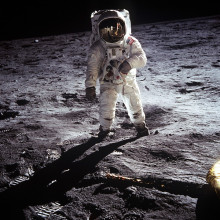
48:44 - Lunar Gateway: the next giant leap for man
Lunar Gateway: the next giant leap for man
Sue Horne, UK Space Agency
The European Space Agency received this bumper €40 billion budget, so what are they going to spend it on? Sue Horne is head of space exploration for the UK Space Agency, and she joined Chris Smith and Adam Murphy...
Sue - Well, for government funding, what we're looking at is putting in place the technologies we need to go onto Mars. It's not about a sustained lunar base that will be looked at by commercial entities who are thinking about using the lunar resources. So, we need to develop technologies to sustain astronauts for the long journey to Mars and back, to be able to use the resources at hand to sustain those astronauts and to be able to protect our astronauts from the radiation, the solar wind.
Adam - Now we heard other people mention across the show this idea of the Lunar Gateway, what is that? What does it look like?
Sue - This is a small space station that will orbit the Moon and it makes going to the moon more sustainable, so that what you will have by 2025, 2026 is actually a shuttle going from the Gateway to the lunar surface and back. And that makes it a lot cheaper than sending a mission to the Moon and back. So you shuttle your astronauts to the space station and then to the lunar surface.
Adam - And how do you put a space station around the Moon?
Sue - Well you send it up in bits. So the first flight will be in 2021, which will send the propulsion and the power system. And then in 2022 the first habitation module will go there, and it's fitted together like we built the International Space Station above the Earth, but its going to be a lot smaller than the International Space Station.
Adam - And now, you're with the UK Space Agency. So what's the UK's involvement in these missions?
Sue - Well we are a member of the European Space Agency. We contributed 180 million pounds to the exploration program. And for that, the money actually flows back to UK industry. So we're expecting to participate in elements of the Gateway. So we're very interested in doing in the telecommunications and the refuelling element. We're also trying to develop commercial services at the Moon. So we would like a UK company to provide a data relay service from the Moon, and hopefully that will be launched in 2022. And that makes the science instruments and the elements you're going to put on the Moon cheaper because you don't have to take such heavy communication systems. All you have to do is get your communication to the satellite orbiting the Moon.
Adam - Now we've heard across the show that all of this is happening so quickly. What do you reckon the timeline is for getting to the Moon and then getting further onto Mars?
Sue - Well I think NASA has got an ambitious, challenging timescale of getting man to the Moon by 2024. They can do that. It is quite a tight schedule. It might slip a little bit, but they are intent on getting there for 2024 I think going to Mars, that's a much longer thought. We still don't know quite how to keep our astronauts safe in that 500 day journey to Mars and back. So I would think, personally, I think it's about 2050, Some people are saying 2030 but I think that's far too soon. We won't have fully tested out the technologies on the Moon by then.
Chris - If I may come in there, Sue. What's the anticipated lifetime for this gateway orbiter that will be around the Moon?
Sue - That's an interesting question. Space missions always last longer than originally anticipated. I used to work on a mission called Cluster, which was supposed to finish after two years, and that was launched early two thousands and is still going. The International Space Station was supposed to finish a couple of years ago and is still going strong, and I expect it to go be going till 2030. So the Gateway, I believe the initial plans are at least till 2030, but it could be a lot longer than that. We build very sound systems because of the harsh environments. So it could be going for some time.
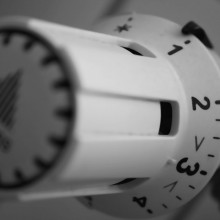
53:55 - QotW: Leave the heating on low, or turn it off?
QotW: Leave the heating on low, or turn it off?
Amalia - Over on the forum, user alancalverd said: Heat loss depends on source temperature, so if you let the room cool down in your absence, you won't be using or losing any heat. Frost protection is still essential but the trick is to set the lowest protection temperature (obviously above 0 deg C) that you can tolerate on your return. However some refrigerators and freezers won't work in an ambient below 15 deg C, so beware!
We put Tim’s question to Mike Childs, Head of Science, Policy & Research at Friends of the Earth:
Mike - The answer is to only heat your home when you need it. You can think of your home like a slow puncture on a push bike that you can’t be bothered to fix. like a slow puncture that releases air, our homes slowly leak heat. You wouldn’t pump air into the tyre of your bike every ten minutes if you only needed to use the bike in 8 hours time. That would be a waste of energy. Instead you’d just pump it up when you are ready to cycle home. In the same way you only want to heat your home when you need it. Of course the best option is to fix your puncture. And the best option for your home is to stop it leaking energy, through fitting insulation. That’s better for the planet and your pocket.
Amalia - And if you want to make your place warm by the time you get home from work - you might consider a timer, or smart controls that allow you to adjust your heating remotely. But, as Mike points out, what type of heating you have could be a factor here...
Mike - If you’ve shifted away from using a gas-fired boiler for your home to an electric powered air-source heat pump, you do need to stop your house getting too cold because it takes longer to heat-up. The upside is that by fitting an air source heat-pump you will significantly cut the climate change causing carbon emissions that our heating systems pump out every day.
Amalia - Heat pumps work by transferring heat from a source to a liquid, which is compressed and used to warm up water, which is in turn used to heat your home. As Mike mentioned, air can be the heat source, as can the ground.
Mike - So the answer is fit insulation, only heat your home when you’re in it, and think about switching to eco-friendly heating.










Comments
Add a comment